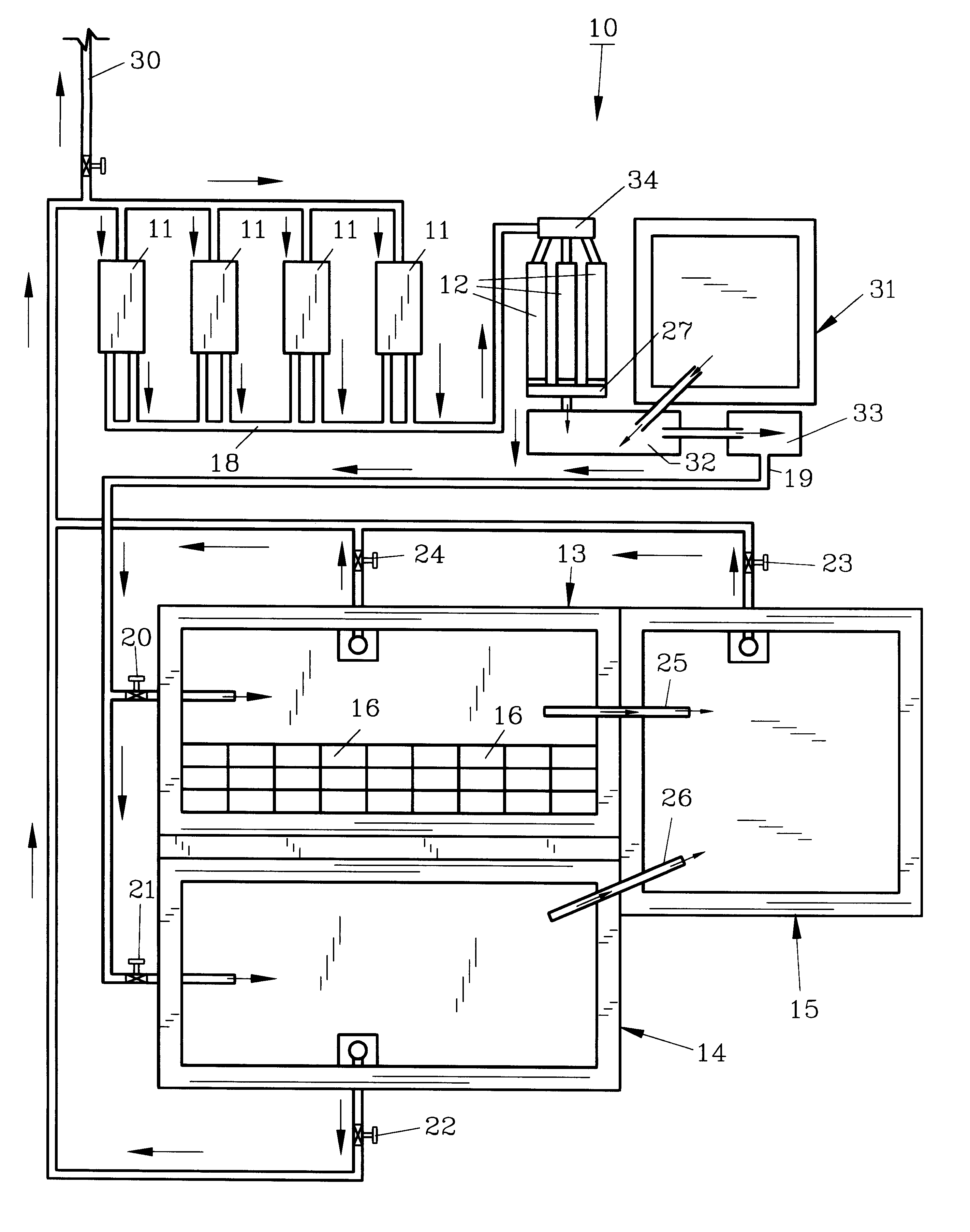Hog waste processing apparatus and method
a technology for processing equipment and hog waste, which is applied in the direction of biological water/sewage treatment, filtration separation, separation processes, etc., can solve the problems of shutting down existing farms, and causing a lot of problems
- Summary
- Abstract
- Description
- Claims
- Application Information
AI Technical Summary
Benefits of technology
Problems solved by technology
Method used
Image
Examples
Embodiment Construction
Turning now to the drawings, specifically FIG. 1 shows preferred schematic apparatus 10 which comprises plurality of conventional hog barns 11, each of which has a concrete floor or pad positioned three feet (1 m) below a slitted false floor (neither shown) . A layer of water (also not shown) covers the permanent concrete pad. This pad effectively forms a storage area for deposited excrement of liquid and solid waste. While this invention is preferably directed to hogs, it can be adapted to other livestock without departing from the spirit of the invention. Hogs (not shown) create solid waste (also not shown) within barns 11 which falls through floor slits onto a water covered permanent pad or floor as conventional for storage. Once a week or sometimes more frequently, the water and waste in the storage area is flushed by water from barns 11 to separators 12 (three shown) only to be replaced by a new layer of water. This noxious effluent (waste and water) passes through conventional...
PUM
| Property | Measurement | Unit |
|---|---|---|
| Area | aaaaa | aaaaa |
| Gravity | aaaaa | aaaaa |
| Surface area | aaaaa | aaaaa |
Abstract
Description
Claims
Application Information
 Login to View More
Login to View More - R&D
- Intellectual Property
- Life Sciences
- Materials
- Tech Scout
- Unparalleled Data Quality
- Higher Quality Content
- 60% Fewer Hallucinations
Browse by: Latest US Patents, China's latest patents, Technical Efficacy Thesaurus, Application Domain, Technology Topic, Popular Technical Reports.
© 2025 PatSnap. All rights reserved.Legal|Privacy policy|Modern Slavery Act Transparency Statement|Sitemap|About US| Contact US: help@patsnap.com


